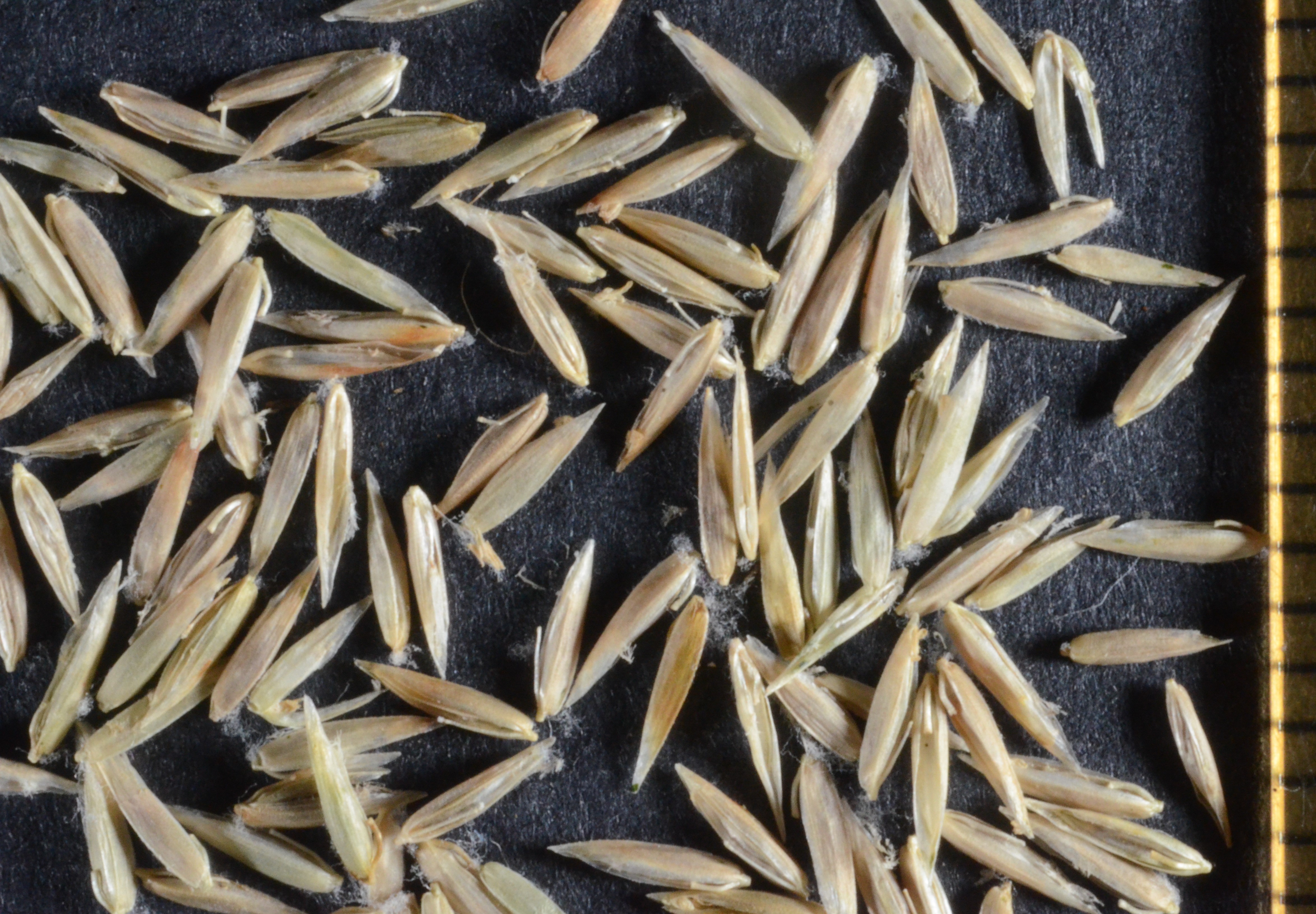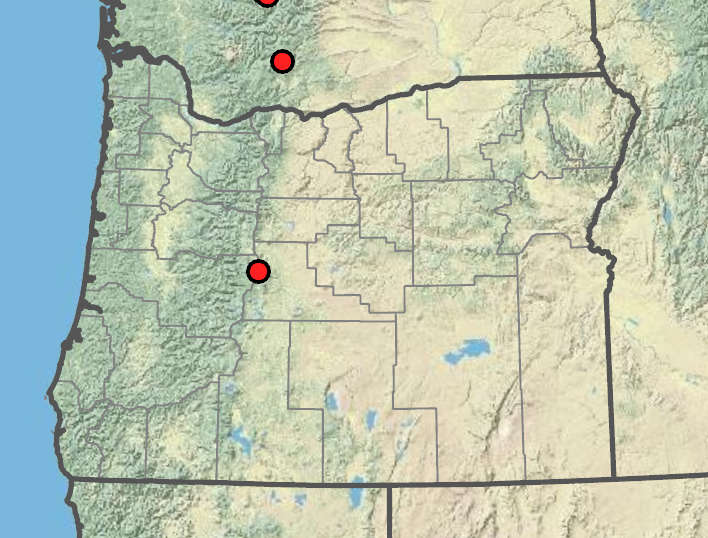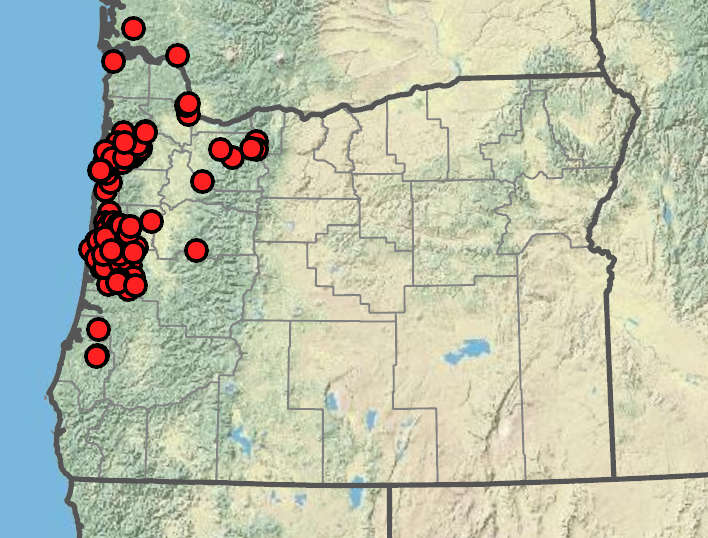Poa lettermanii
Poa laxiflora
Letterman's bluegrass
looseflower bluegrass
retrorsely scabrous.
intra- and extravaginal or mainly intravaginal.
extravaginal.
sheaths closed to 25% of their length;
ligules 1–3 mm;
blades flat or folded, or slightly inrolled, 0.5–2 mm wide.
sheaths closed 25–50% of their length, retrorsely scabrous;
ligules 2–3.5 mm;
blades flat, 3–8 mm wide.
erect, contracted, 1–3 cm long, usually exserted from the sheaths;
branches erect to steeply ascending; slender; to 1.5 cm.
open; sparse, 14–30 cm;
branches widely spreading, fairly straight; (5.5)8–12(15)cm, 1–3(4) per node, antrorsely scabrous, with 3–13 spikelets.
3–4 mm, green or purple;
florets 2–3;
rachilla internodes less than 1 mm long; smooth.
4–8 mm;
florets 2–4;
rachilla internodes about 1 mm long.
lanceolate to broadly lanceolate, 2.4– 3.6(4) mm, usually equaling or exceeding the lowest lemma, frequently exceeding the upper florets;
lower glumes 3-veined.
keels scabrous;
lower glumes lanceolate, 3-veined but margins tending to roll up, often concealing the marginal veins and appearing 1-veined;
upper glumes shorter than or subequal to the lowest lemma.
glabrous.
with cobwebby hairs.
lanceolate, 2.5–3 mm long, distinctly keeled; thin, glabrous;
keels and marginal veins rarely sparsely puberulent;
tips acute.
lanceolate, 3.2–6 mm, distinctly keeled; smooth or sparsely finely scabrous;
keels longvillous to 67–75% of their length; marginal vein hairs sparse, intermediate veins usually glabrous, rarely sparsely puberulent, glabrous between the veins;
tips acute.
0.2–0.8 mm.
0.5–1.1 mm.
=14.
Poa lettermanii
Poa laxiflora
Rocky alpine ridges and ledges. 2900–3100m. Casc. CA, ID, NV, WA; north to British Columbia, east to CO. Native.
This is a small, cespitose, alpine bluegrass, most similar to P. suksdorfii. Both have subequal glumes that tend to be longer than the lowest lemma, but P. suksdorfii has larger spikelets with longer glumes. In Oregon, P. lettermanii is known only from high elevation on South Sister in the central Cascades.
Moist, shady, riparian terraces in conifer forests. 0–1100m. Casc, CR, Est, WV. WA; north to AK. Native.
Poa laxiflora has an extremely open panicle with spreading, nodding branches. In P. marcida, the entire inflorescence nods, but the branches parallel the inflorescence axis, and the lemmas taper more gradually. Poa nervosa has shorter panicles, usually glabrous calluses, and longer anthers. Poa leptocoma, usually found at higher, more eastern sites, has one-veined lower glumes and a more erect inflorescence.
Rob Soreng, Barbara Wilson, Richard Brainerd, Nick Otting
Rob Soreng, Barbara Wilson, Richard Brainerd, Nick Otting
- Local floras:
BC,
CA,
OR,
WA
- Local Web sites:
CalFlora,
CalPhotos,
Flora NW,
PNW Herbaria
WildflowerSearch
iNaturalist (observations)
USDA Plants Database
- LBJ Wildflower Center
- SEINet
- Plants of the World Online
- Encyclopedia of Life
- Wikipedia
- Google Image Search
- Local floras:
BC,
OR,
WA
- Local Web sites:
Flora NW,
PNW Herbaria
WildflowerSearch
iNaturalist (observations)
USDA Plants Database
- LBJ Wildflower Center
- SEINet
- Plants of the World Online
- Encyclopedia of Life
- Wikipedia
- Google Image Search




